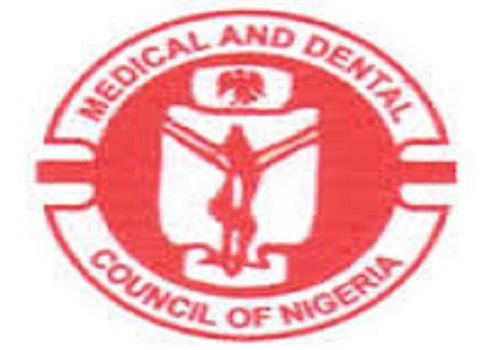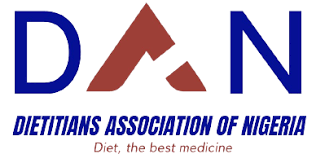ASSOCIATION OF HOSPITAL AND ADMINISTRATIVE PHARMACISTS OF NIGERIA (AHAPN)
Commemorating 2020 World Patient Safety Day
The Role of the Pharmacist in Patient Safety
Today is being observed all over the world as World Patient Safety Day. The Seventy-second World Health Assembly adopted Resolution WHA 72.6 ‘Global action on patient safety’ on 25 May 2019. The resolution recognizes patient safety as a global health priority and endorsed the establishment of World Patient Safety Day, to be observed annually on 17 September. The theme for the 2020 World Patient Safety Day is Health Worker Safety: A Priority for Patient Safety
The Objectives of World Safety Day 2020 include:
- Raise global awareness about the importance of health worker safety and its interlinkages with patient safety
- Engage multiple stakeholders and adopt multimodal strategies to improve the safety of health workers and patients
- Implement urgent and sustainable actions by all stakeholders which recognize and invest in the safety of health workers, as a priority for patient safety
- Provide due recognition of health workers dedication and hard work, particularly amid the current fight against COVID-19
The World Health Organization (WHO) is proposing a call to action Speak up for health worker safety which requests urgent and sustainable actions by all stakeholders to recognize and invest in the safety of health workers, as a priority for patient safety, and urging people to show their commitment to make healthcare safer for everyone.
The COVID-19 pandemic has highlighted the huge challenges that healthcare workers are currently facing globally. In Nigeria, over 1,000 healthcare workers have been infected to date with COVID-19, with over 20 medical doctors dead, at least two pharmacists and countless number of nurses. Working in stressful environments exacerbates safety risks for health care workers, including being infected and contributing to outbreaks in the healthcare facility, having limited access or adherence to personal protective equipment and other infection prevention and control measures, and inducing errors which can potentially harm patients and healthcare workers. In many countries, healthcare workers are facing increased risks of infections, violence, accidents, stigma, illness and death. Additionally, working in stressful environment increases risks to the physical and mental health and safety of health workers making them more prone to errors which might lead to patient harm.
Pharmacists and Patient Safety
Clinical pharmacy is a health science discipline in which pharmacists provide patient care that optimizes medication therapy and promotes health, wellness and disease prevention. Hospital pharmacy is a specialization of this field where pharmacists collaborate with doctors in aiding drug therapy. Pharmacists play a key role in reducing adverse drug events and improving patient safety during transitions in healthcare. Pharmacists are one of the most accessible healthcare providers, and are the best trained to help patients use their medication.
Hospital pharmacists as clinical pharmacists are competent clinicians, excellent communicators, knowledge managers, health educators, leaders and problem solvers. They are also multi taskers, learners, researchers and innovators. The overarching goal of hospital pharmacists is to optimize patient outcomes through the judicious, safe, efficacious, appropriate and cost-effective use of medicines. All prescriptions should be reviewed, interpreted, and validated by a hospital pharmacist prior to the medicine being dispensed and administered. They also offer pharmaceutical care to patients and monitor patients use of medicines to assure patient safety, appropriate medicine use and optimal outcomes. They ensure that all patients are educated on the appropriate use of their medicines and provide orientation and education to nurses, physicians, and other hospital staff regarding best practices for medicines use.
Hospital pharmacists engage in research into new methods and systems to improve the use of medicines and are involved in all patient care areas to prospectively influence collaborative therapeutic decision-making. They are meant to be an integral part of all patient
rounds to assist with therapeutic decision-making and advise on clinical pharmacy and patient safety issues. They equally provide continuity of care and ensure that proper storage conditions are provided for all medicines used in hospitals. Hospital pharmacists are responsible for determining which medicines are included in ward stock and for standardizing the storage and handling of ward medicines in order to guarantee the quality of medicines.
Hazards Pharmacists face in their work places
Hospital pharmacists just like other healthcare workers face a lot of hazards in their day to day communications with patients and other healthcare workers. Some of these hazards are:
Biological Hazards: As pharmacists make contact with patients and the public regularly, they are exposed to biological hazards. Biological hazards include tuberculosis, Hepatitis, HIV/AIDS, COVID-19 and so on. The immunization of workers provides a first line of defense when interacting with patients. Other measures should also be put into place, including the restriction of access to authorized personnel only, implementation of safe work procedures, and use of personal protective equipment, such as eye protection, gloves, and respiratory protection. Regular maintenance reduces the risk of contamination.
Chemical Hazards: Compounding pharmacies make drugs for patients whose medication needs can’t be met by commercially available drugs. Examples of chemical hazards are glutaraldehyde, ethylene oxide. Interacting with different kinds of chemicals puts pharmacists at risk, but there are measures that can be put in place to ensure their safety. Education, limiting the exposure time and ensuring safe disposal of substances will all help to reduce the risks.. Pharmacies should have safe work procedures in place in case of spills and any other mishaps that involve harmful substances. In addition, pharmacists working with the chemicals should wear the proper protective clothing and gear, including eye protection, face shields, gowns, and gloves.
Ergonomic Hazards such as heavy lifting. A pharmacy workplace setting should enable workers to move freely and with ease. Additionally, equipment needed for the job, such as computers, should be adjusted accordingly. Providing seating options and designing shelves to make access to medications easier also can improve the health and safety of pharmacists.
Pharmacists rely on computers to do their job, therefore adjustments should be made to make them user friendly. For instance, screen brightness should be adjusted so it doesn’t hurt the eyes. Plus, where and how it is accessed should also be considered. Materials that are non-slippery should be used on the floors to avoid slips, trips, and falls. Several common work activities pose repetitive stress ergonomic hazards. Examples include typing and mousing, which can result in carpal tunnel syndrome.
Physical Hazards: They include noise, radiation, slips, trips and falls. Cuts are one of the most common pharmacy injuries. Sharp instruments (medical instruments, scalpels, and scissors), broken glassware, equipment, and tool use can all contribute to cuts. But these risks can be avoided, or at least minimized, with proper worker education and the implementation of safe work procedures. After using any equipment or tool, it should be put back in a location where it won’t cause any trouble. Wearing protective clothing and gear should also be required. Burns are another physical injury pharmacists can sustain, especially by those who work with heat sealers. When dealing with such machines, education plays an important role in reducing injuries.
5. Psychological Hazards: They include shift work, violence and stress. Long hours and an excessive workload are issues pharmacists are subject to, and can be minimized by changing management policies, procedures, work environment, such as providing adjustable lighting, designing a workplace to improve alertness, and setting an appropriate thermal environment. Pharmacists can also be subject to abuse by clients or fellow co-workers. Workers should be educated about violence awareness and avoidance, and know procedures for de-escalation. Management should also address troubles promptly.
Campaign: Today, September 17th, all key stakeholders-countries, international and national organizations and healthcare facilities are encouraged to develop national and local campaigns adapted to their context, based on the global campaign.
The Association of Hospital and Administrative Pharmacists of Nigeria (AHAPN) wishes all healthcare workers and patients Happy World Patient Safety Day celebration
Dr. Kingsley Chiedu Amibor PharmD, MPH, FPCPharm
National Chairman AHAPN





